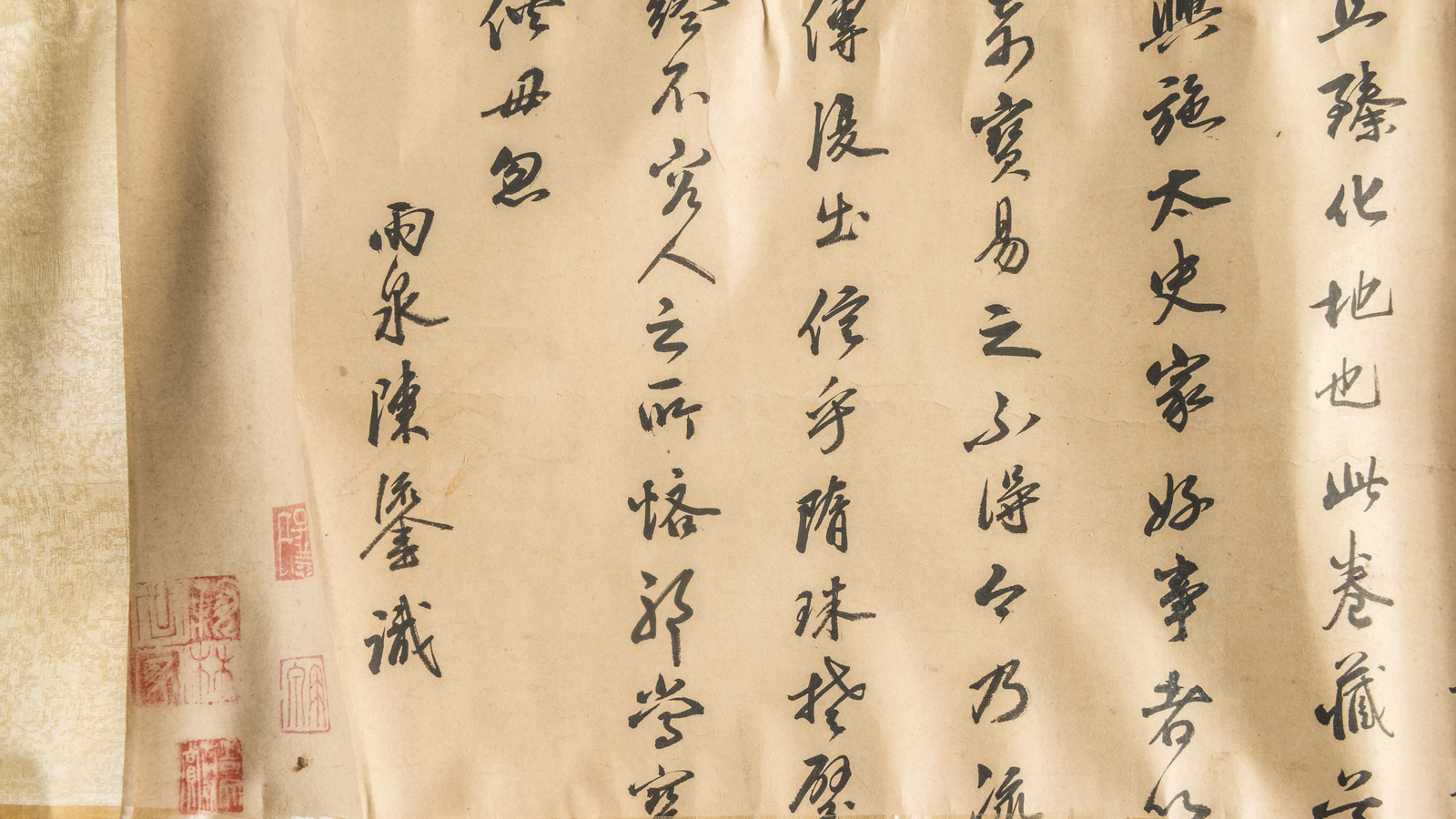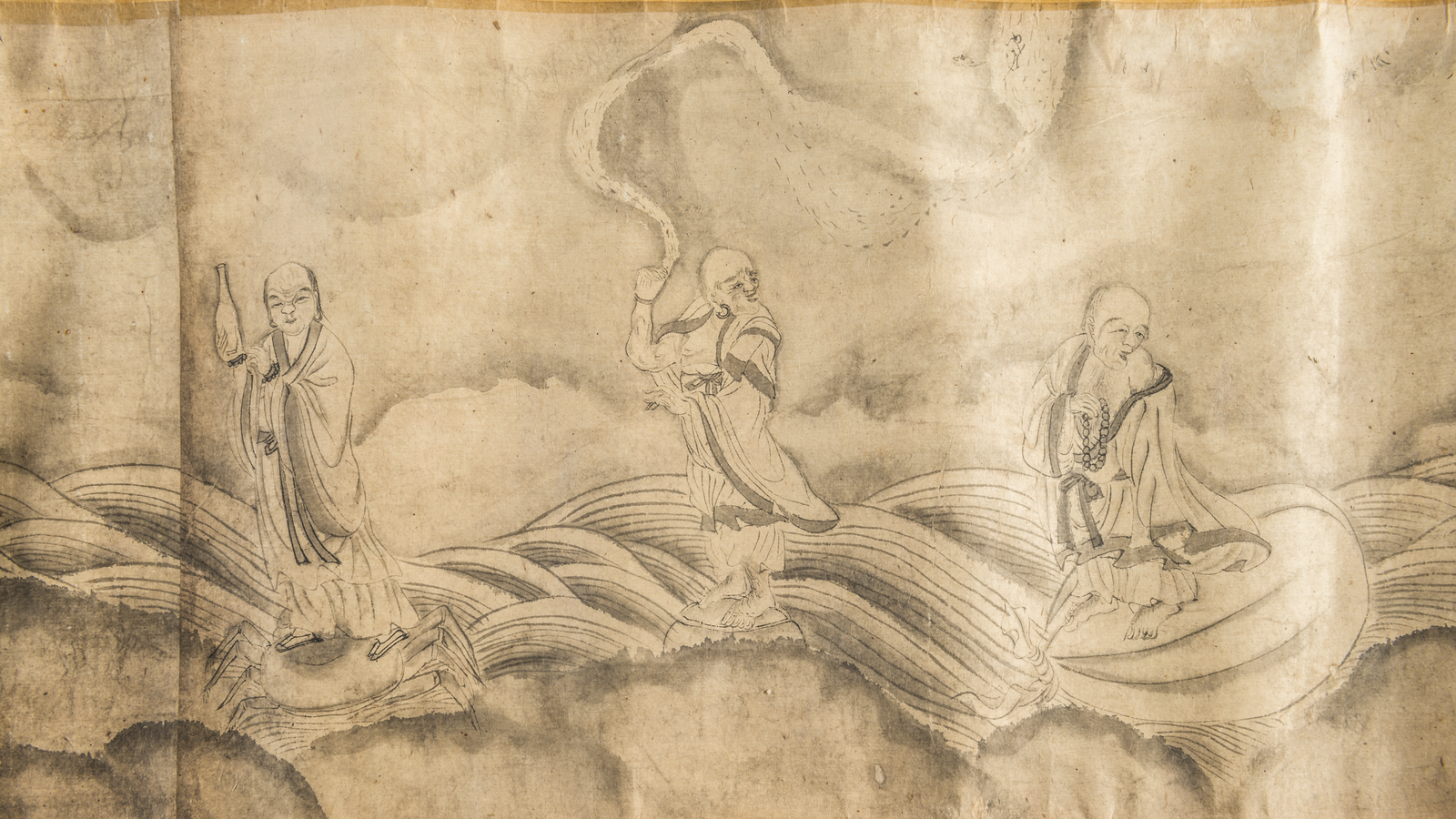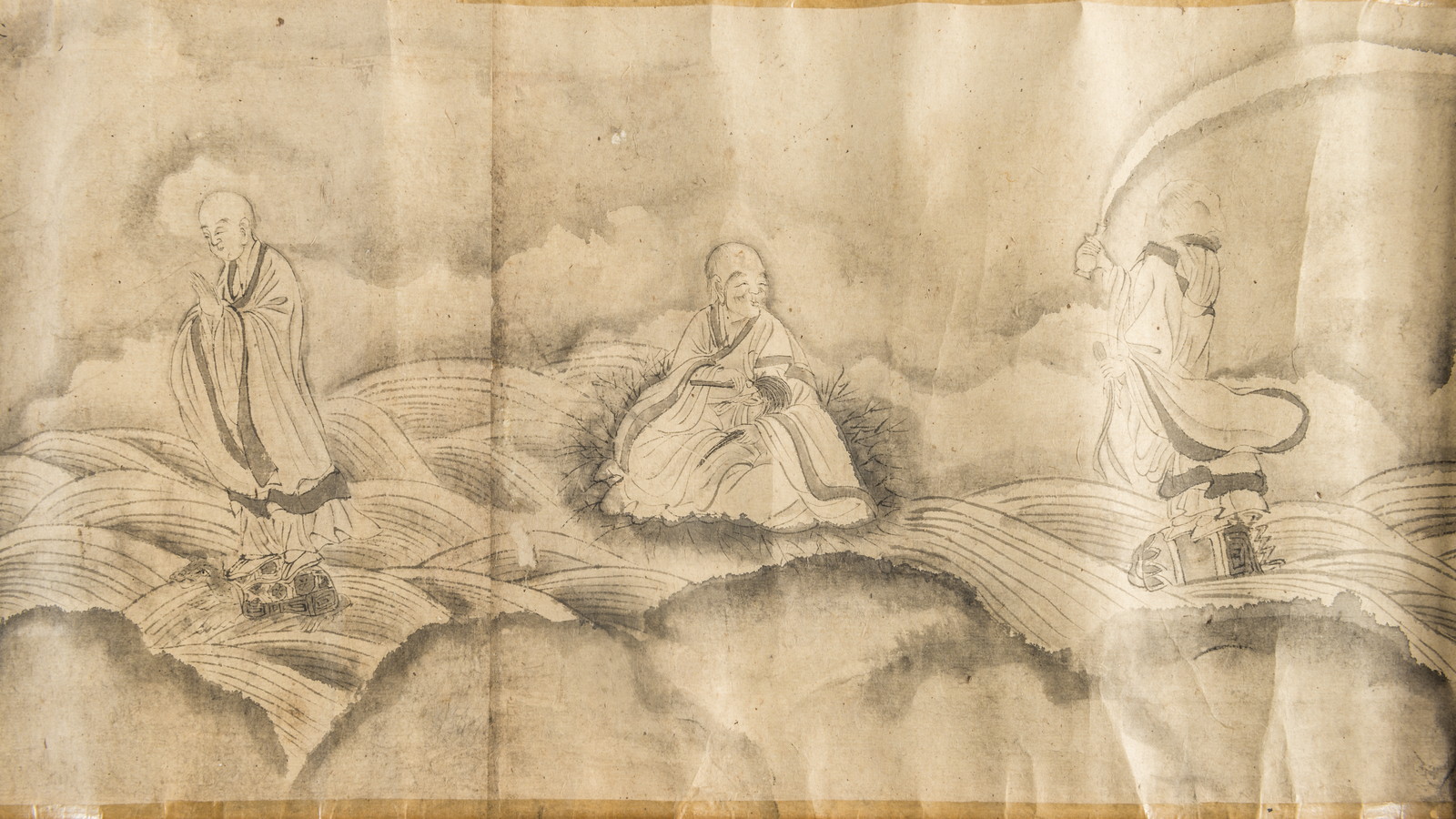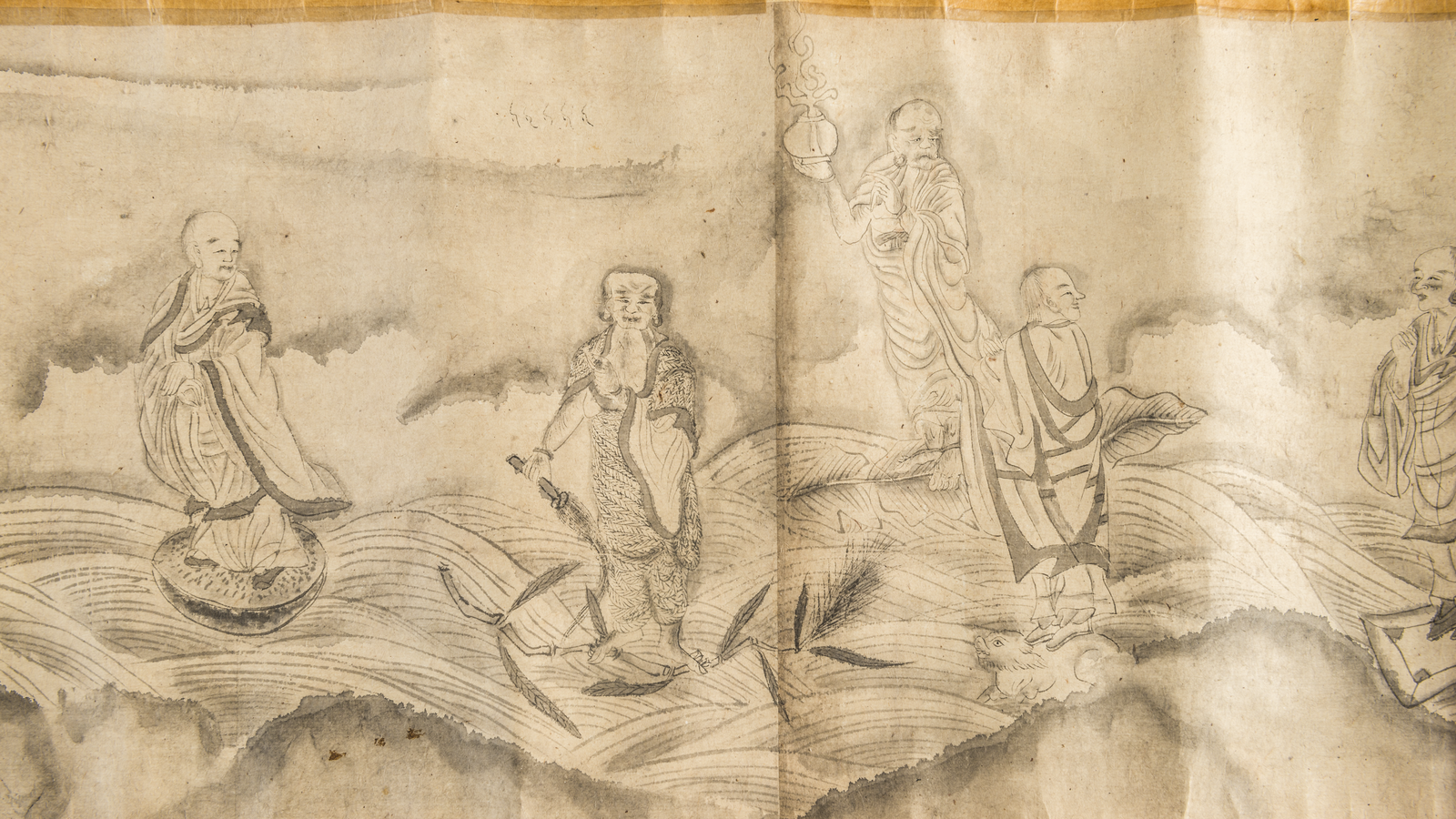Chinese Scroll Painting H533
On this page...
This painting entitled The Eighteen Arhats was donated to the Australian Museum by F W Luscombe in 1901. It depicts Buddha and his followers. An Arhat is a disciple of the Buddha who has attained her or his own Enlightenment or Nirvana – liberation from desire, aversion, and delusion. The Chinese call these eighteen characters the Lohan - derived from a-lo-han - a phonetic approximation to the Sanskrit Arahant.
The scroll is very fragile. It was photographed in 2019 in preparation for a small exhibition titled 'Splendid Traditions'. Photography by Abram Powell
The cult of Sixteen Arhats was introduced to China in 654 (AD), but it began to flourish in the 9th century. An artist Kuan-hsiu (832-912) is traditionally credited for conceiving an image-type of Sixteen Arhats which become somewhat formalised and enjoyed lasting popularity in Chinese art until the 14th century. Sculptures and paintings tend to depict eighteen characters, because two are Buddha ‘patrons-assistants’ and therefore the Sixteen Arhats often converts into Eighteen Arhats.
The overall size of this scroll is approximately 504 x 35 cm, but the actual painting measures about 242 × 30 cm. Non-absorbent paper was used for painting and calligraphy. A wooden roller was attached on the left end. The scroll should be viewed starting from the right end. As viewers unroll the painting from right to left, they will see an image first, followed by two pieces of calligraphy - written comments (70 × 30 cm and 42 × 30 cm respectively). The writings should be read in columns from right to left and each column from top to bottom. Several red seals are stamped on the lower left of each comment.
In the following translations of those comments the terms Arhat and Buddha are used together or as equivalents.
First Comment
Among all the paintings of arhat Buddha, the most difficult to draw is that of the great voyage across the sea. Each Arhat shows his special prowess riding on the divine animal, such as the turtle and kylin (mythical animal) in the wide expanse of the misty water. Without the brilliance of painting, how could one express radiance and charm of the Arhat Buddha, riding over the surges of waves and gusts of winds? These eighteen Arhats exhibit more wonders than half a thousand other people would. Floating on the sea and over the cloud, the Buddha in the painting has attained wonders and the legendary sublimity. Some enthusiasts of books and pictures failed with the attempt to exchange great treasure for the painting collected in the house of Mr Shi, a court historian in Wuxing (a district in Zhejiang province). Now the painting has again spread far and wide. After all, like pearls of Sui Dynasty and jade of Chu Kingdom, nobody can pocket such rare and delicate treasures without sharing it. This makes sense.
Second Comment
Hey! What flow from the painter’s deft brush are sixteen Arhat Buddhas who, in the boundless world of mortals, merit perfection with great accomplishment in Buddhism practice. Some say that Arhats have sought salvation and thus stepped into the Dharmadhatu (purified mind and essential truth), yet where exactly are they? But if they are not there, where would they be? It is certainly impossible to pull such a world from the nostril of an upasaka (a lay devotee of Buddha), it ought to come from a painting.
Research and translation by Libai Li
Explanation:
According to the cursory assessment by the Palace Museum of China (in Taipei, Taiwan) this painting was probably made in the late Qing Dynasty (1644-1912), however the exact time and the artist’s name are unknown.










